Genomic surveillance of emerging threats and epidemic spread
Trevor Bedford (@trvrb)
22 Jun 2018
Emerging Infections and Pandemic Risk
Institut Pasteur
Spread of plague in 14th century
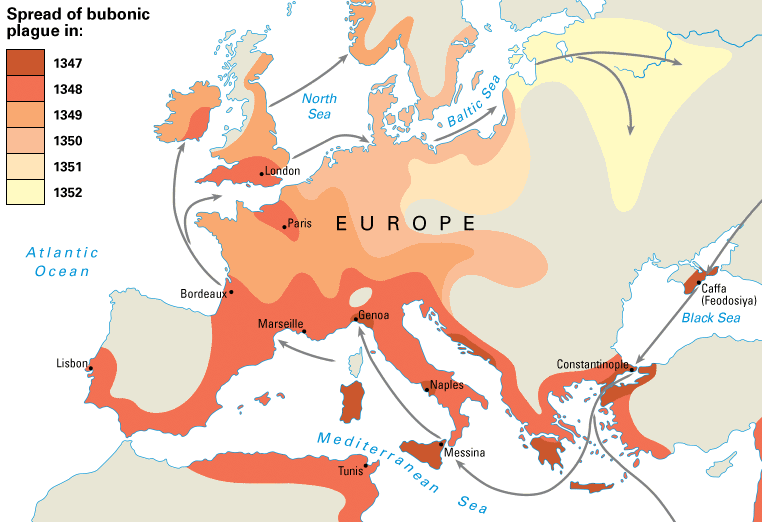
Spread of swine flu in 2009
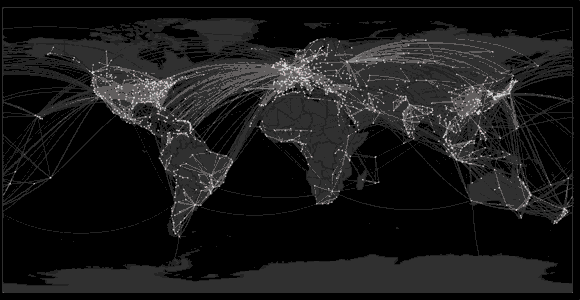
Sequencing to reconstruct pathogen spread
Epidemic process
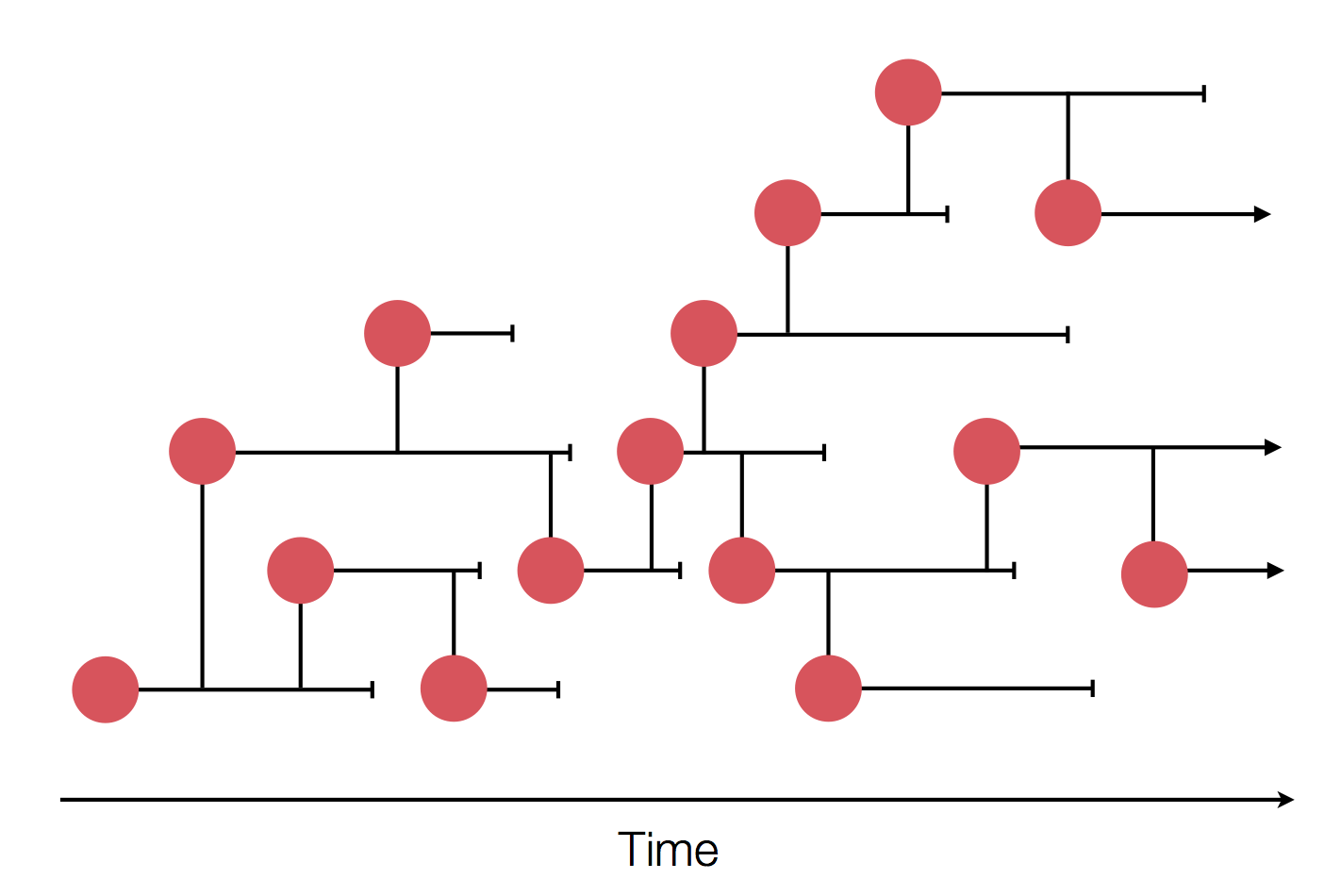
Sample some individuals

Sequence and determine phylogeny
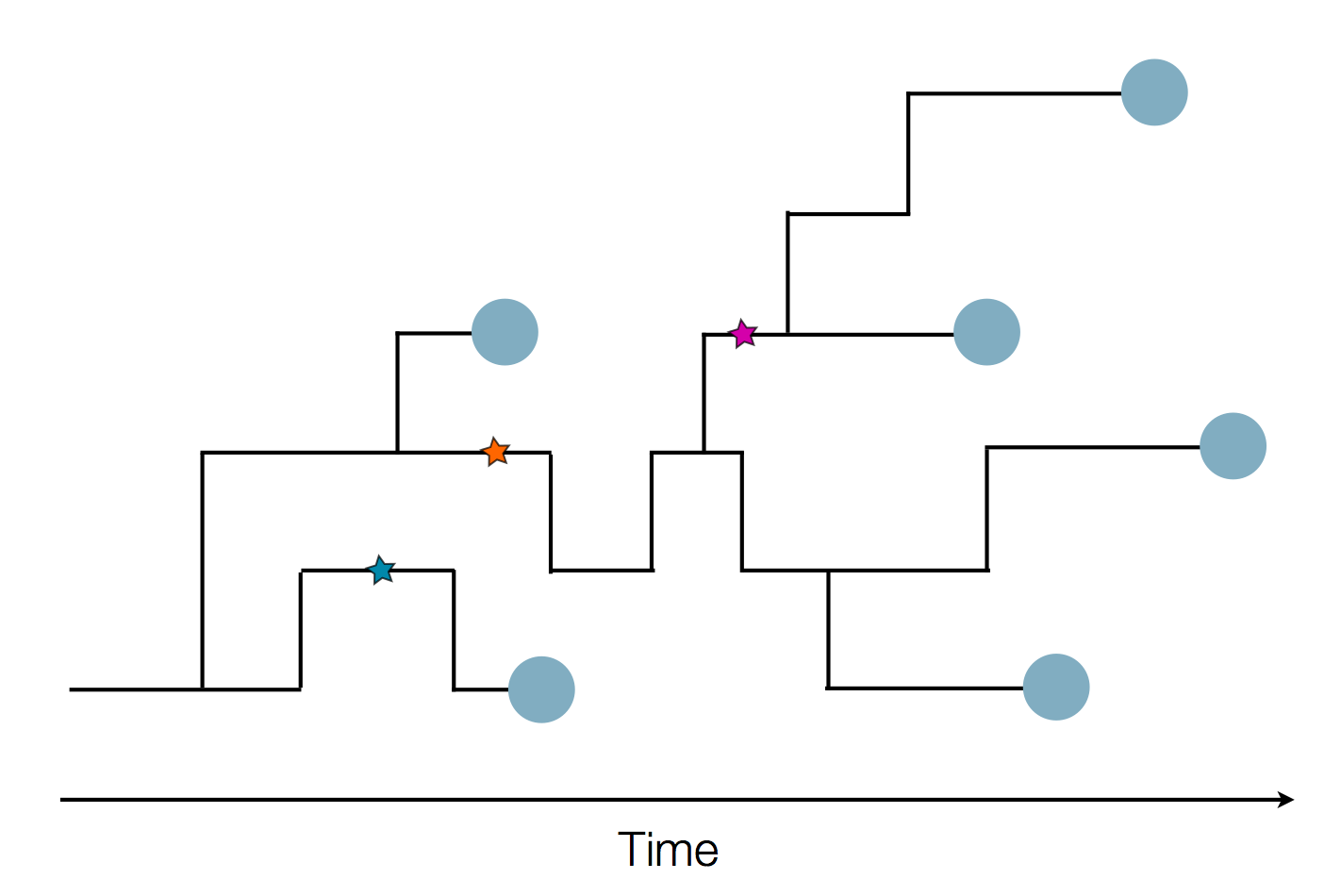
Sequence and determine phylogeny

Localized Middle Eastern MERS-CoV phylogeny
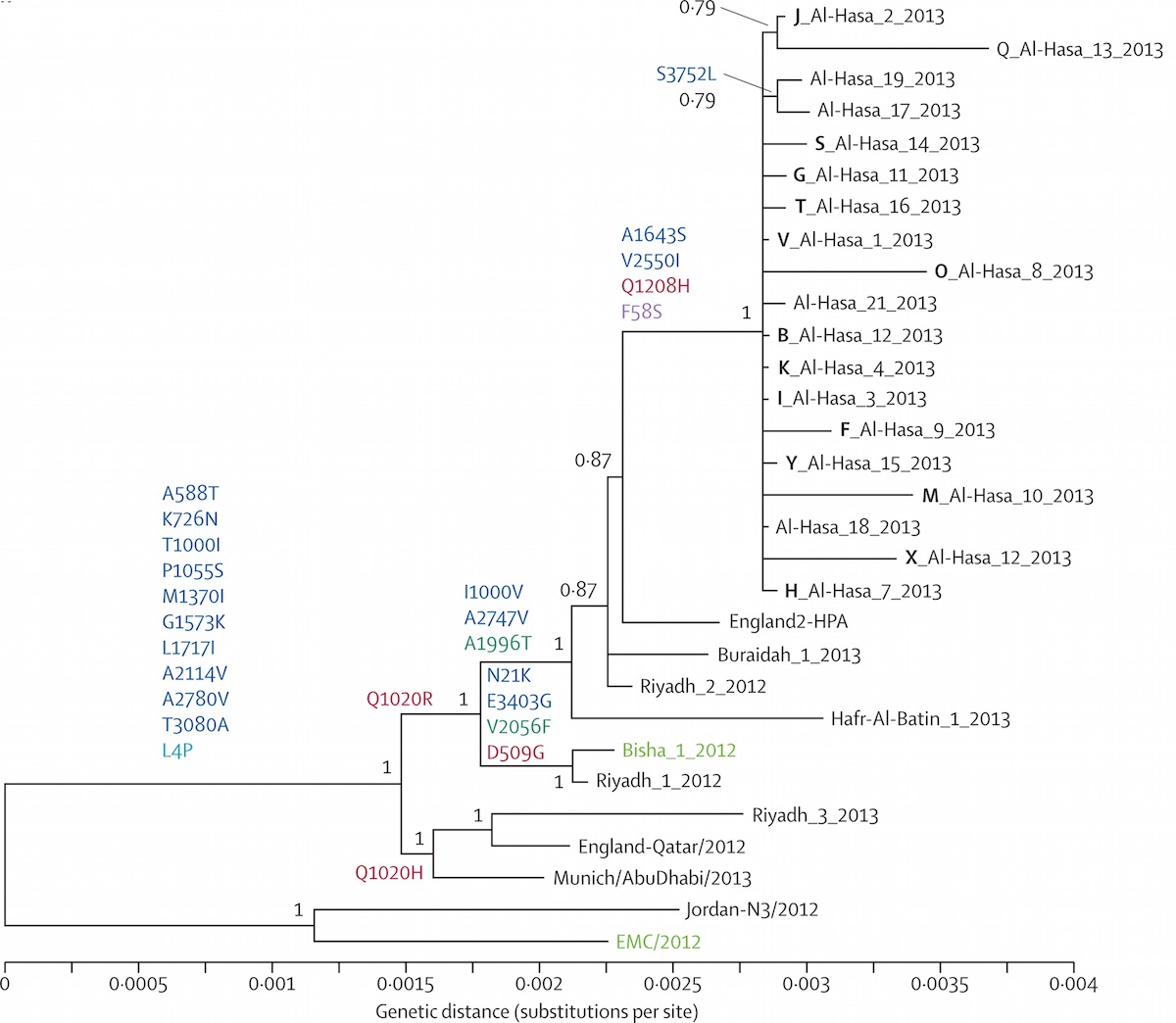
Regional West African Ebola phylogeny

Global influenza phylogeny
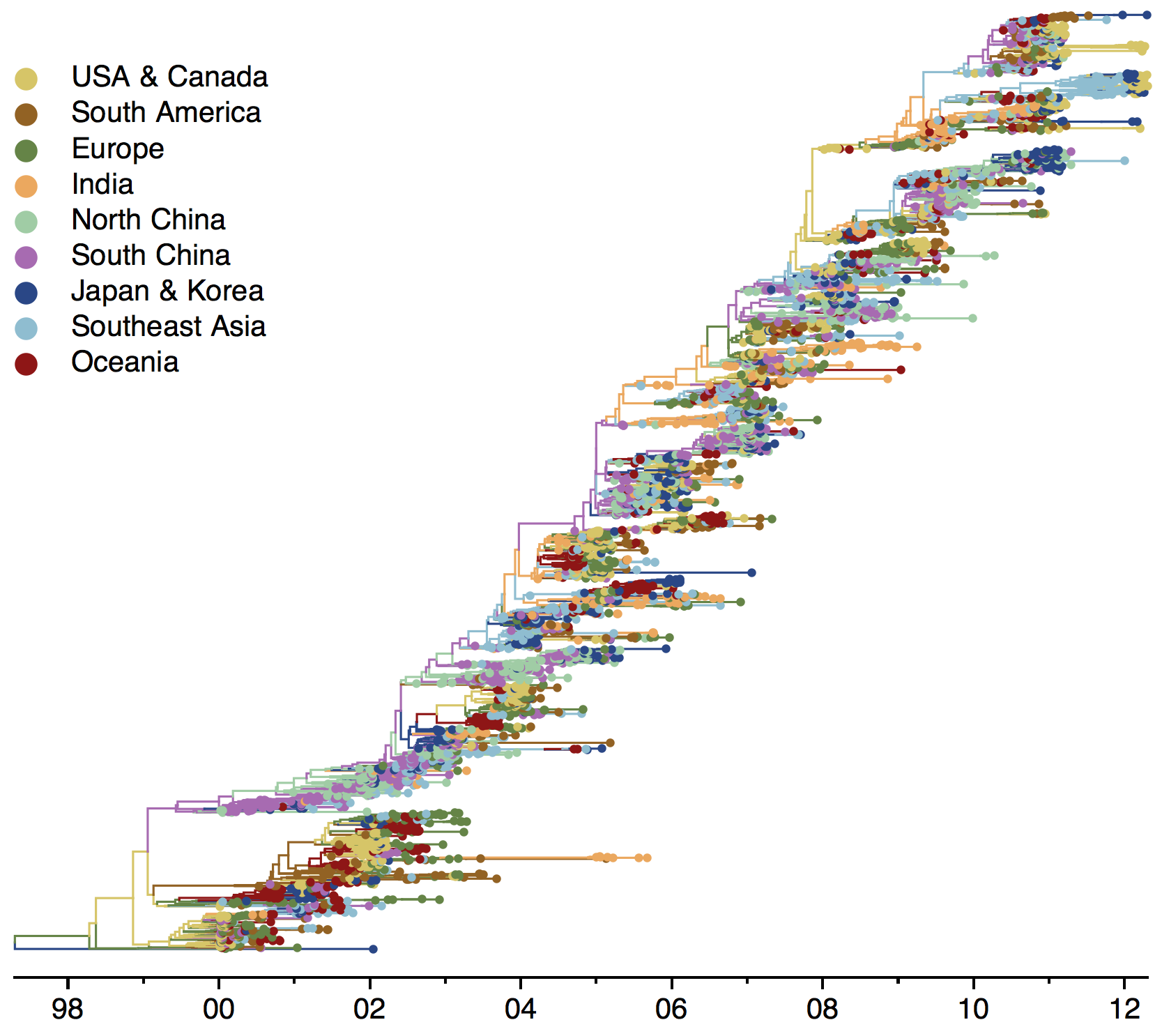
Phylogenetic tracking critical to pandemic warning systems and outbreak response
Monitoring of animal-to-human spillover
MERS spillover in the Arabian Peninsula
Monitoring of human-to-human transmission
Ebola spread in West Africa
Zika spread in the Americas
MERS-CoV
Middle East respiratory syndrome coronavirus (MERS-CoV)
- First identified in Saudi Arabia in 2012
- 2220 confirmed cases to date and 790 deaths
- Camels thought to be the intermediate host
- 30% of common colds due to endemic human coronaviruses
Ongoing incidence, but lack of epidemic growth
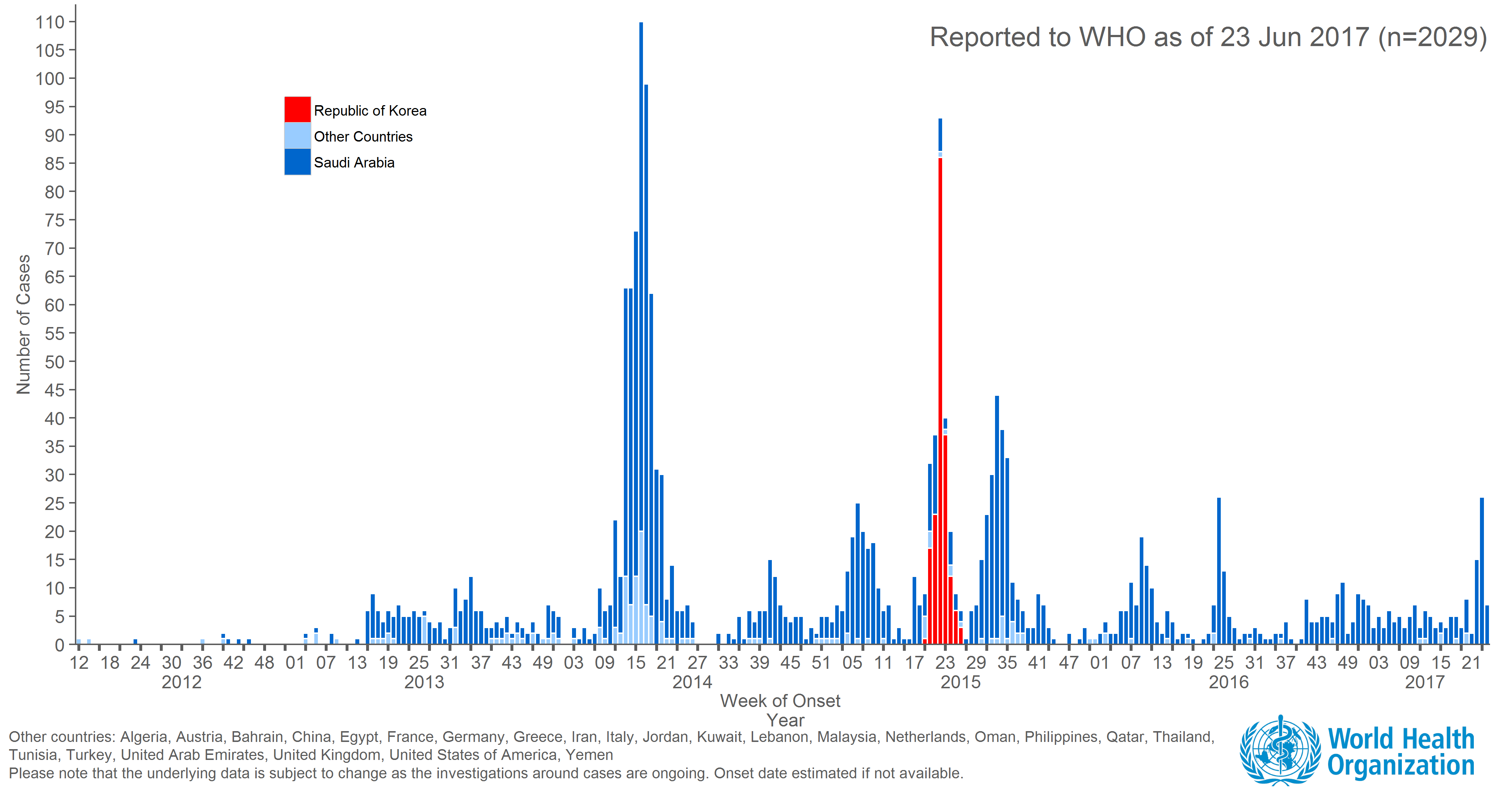
Cases localized to the Arabian Peninsula

Hypotheses for MERS transmission
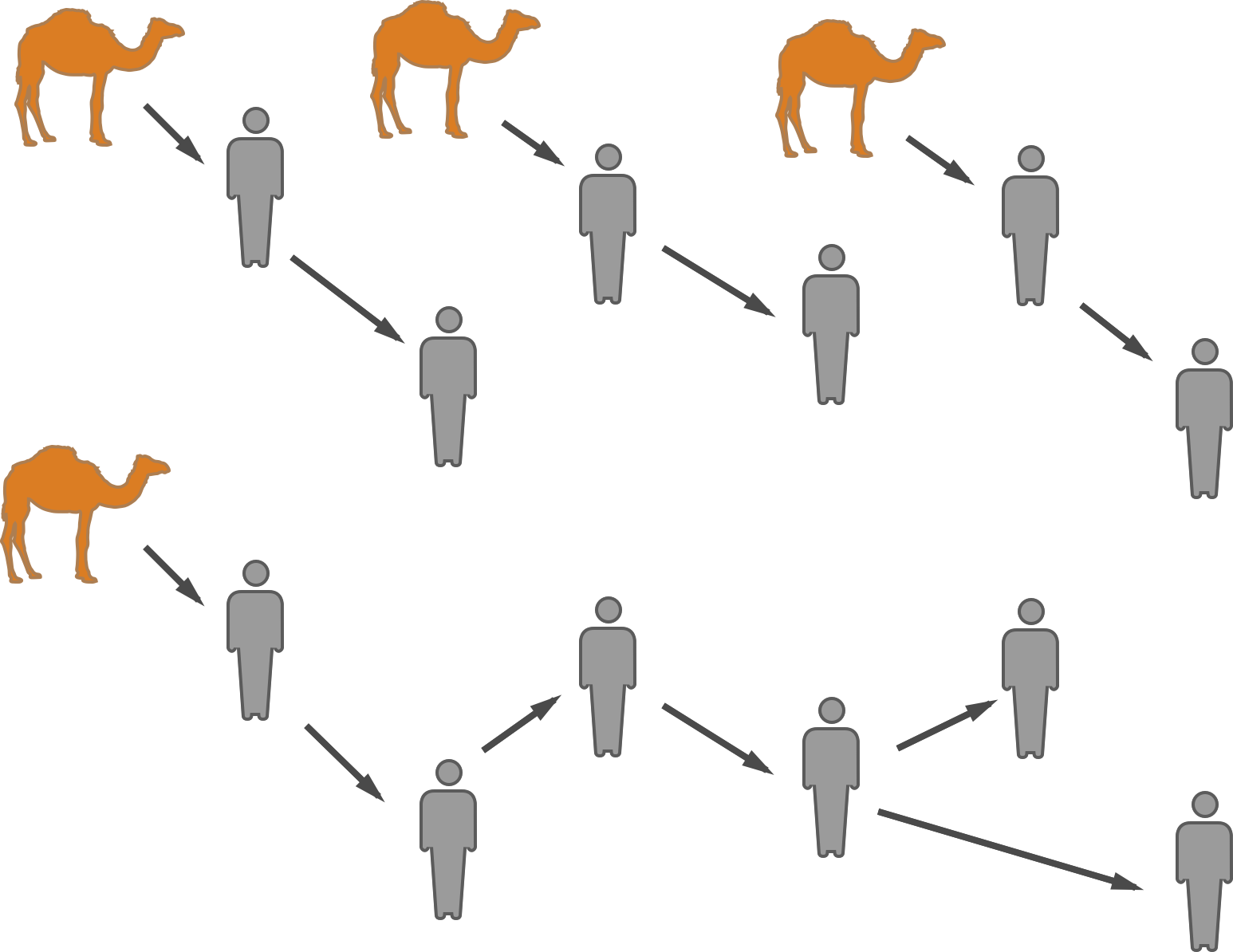
MERS-CoV spillover at the camel-human interface
with ![]() Gytis Dudas, Luiz Carvalho and Andrew Rambaut
Gytis Dudas, Luiz Carvalho and Andrew Rambaut
Genomic dataset
- 174 virus genomes from human infections
- 100 virus genomes from camel infections
MERS tree with host state
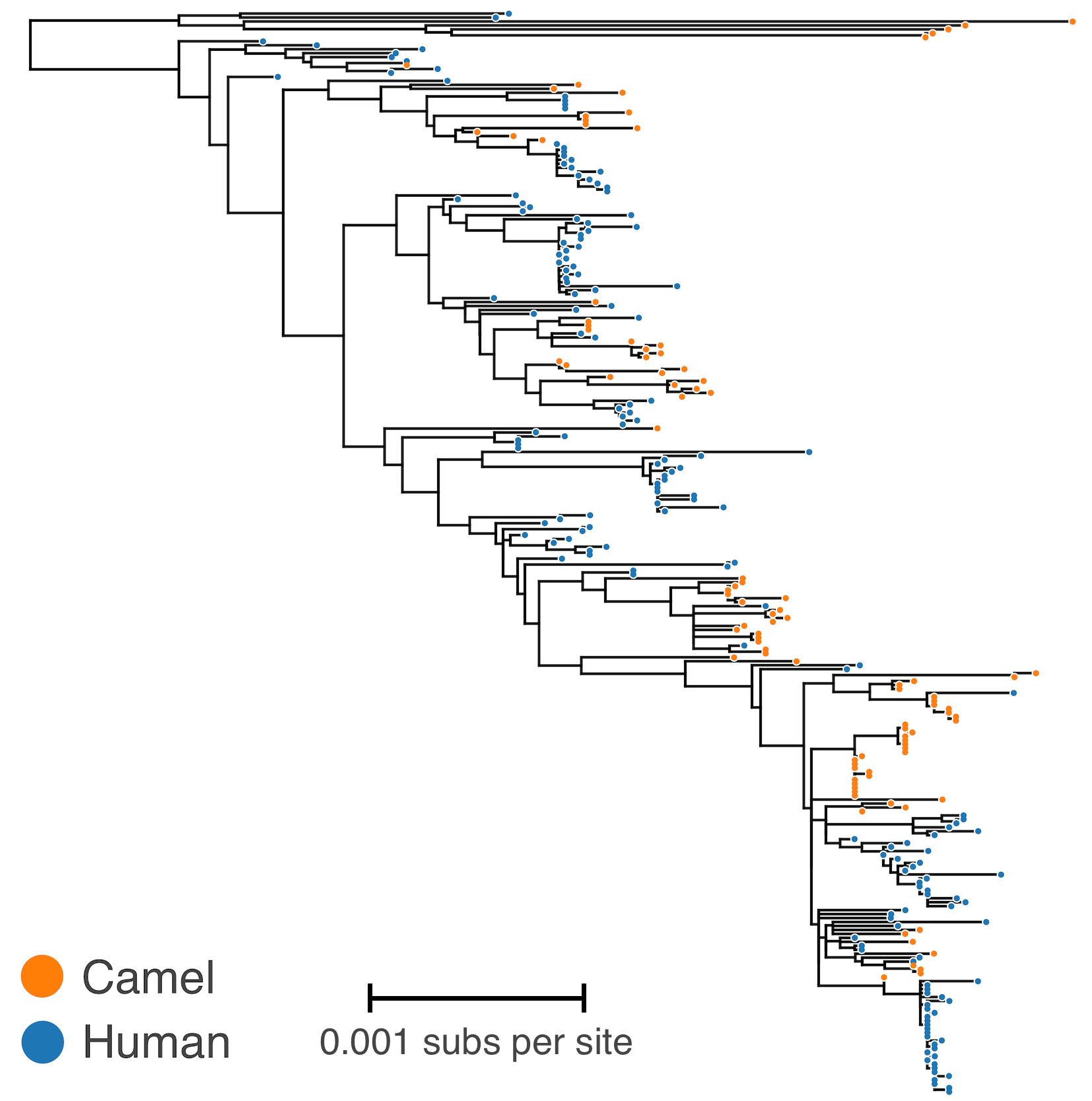
Phylodynamic reconstruction of host state
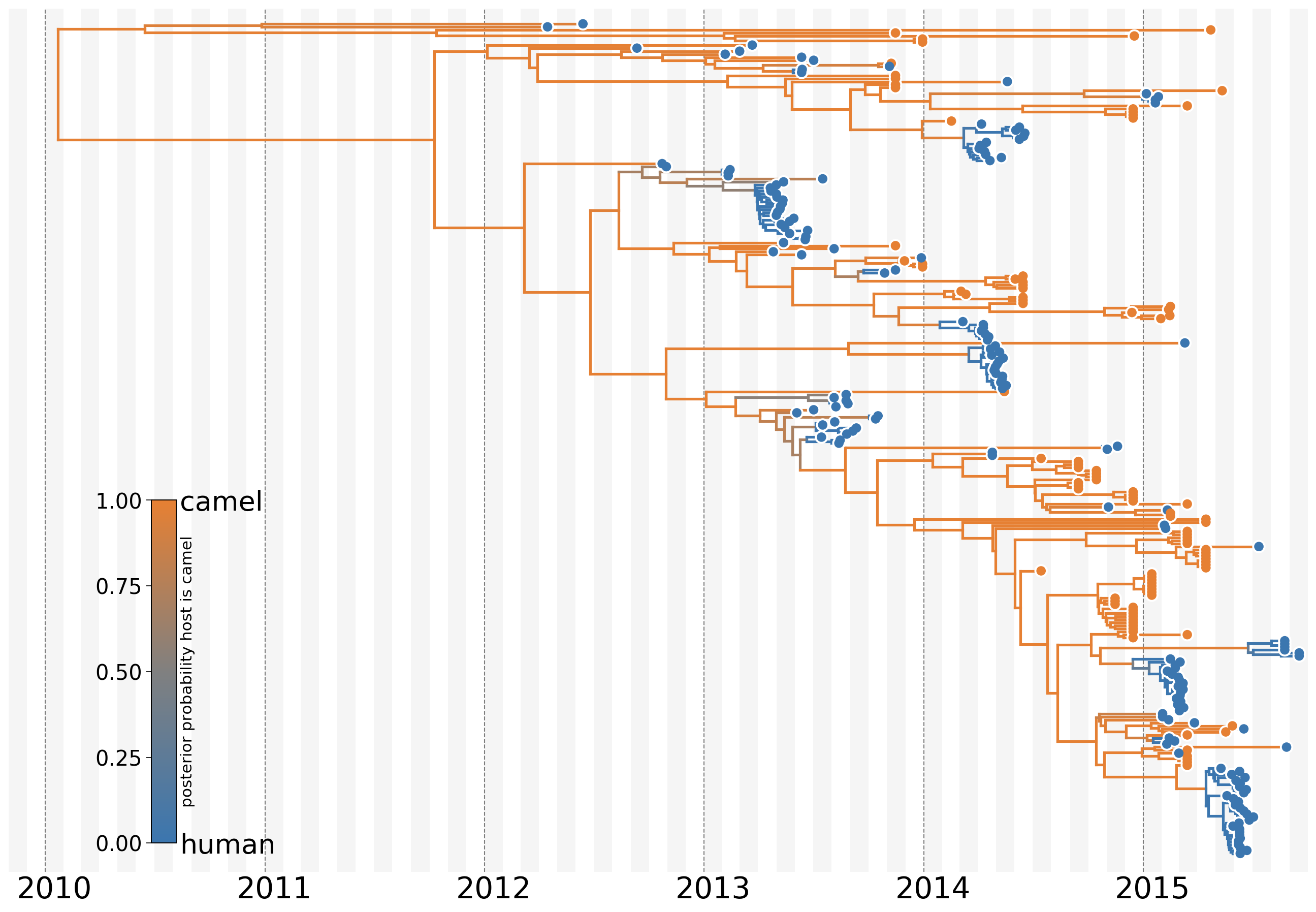
Humans are transient hosts

Asymmetric migration rates
- 56 (48–63) camel-to-human transmission events resulting in 174 sequenced human infections
- 3 (0-12) human-to-camel transmission events
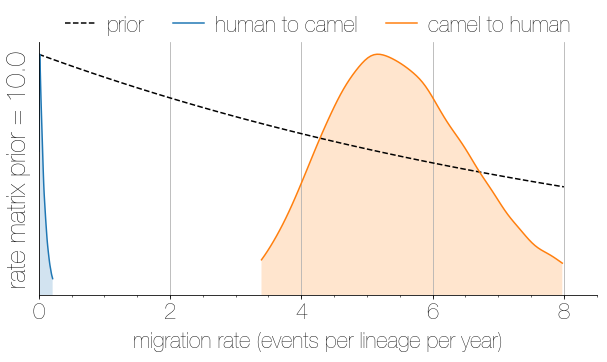
Introduction events tend to occur between April and July
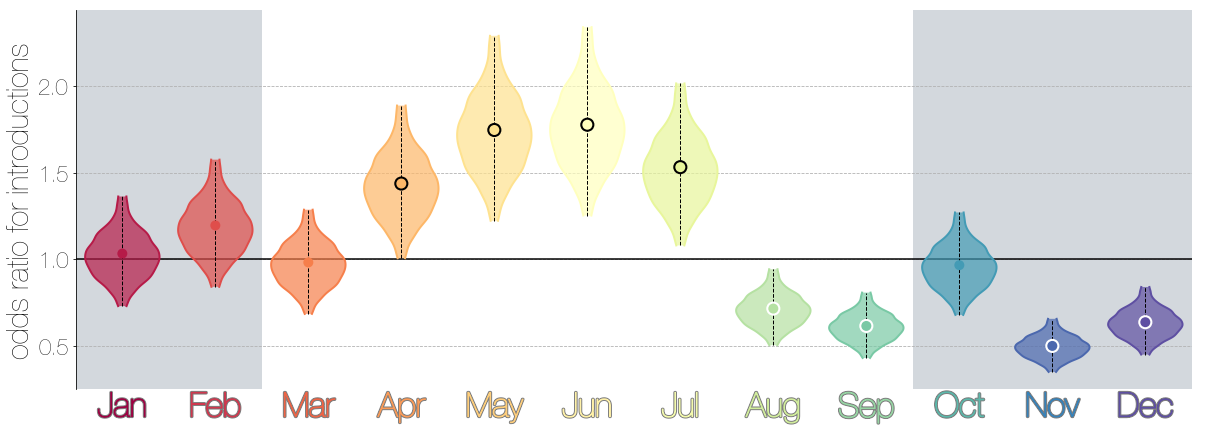
Dromedary camel calving occurs between Nov and Feb
Monte Carlo simulation
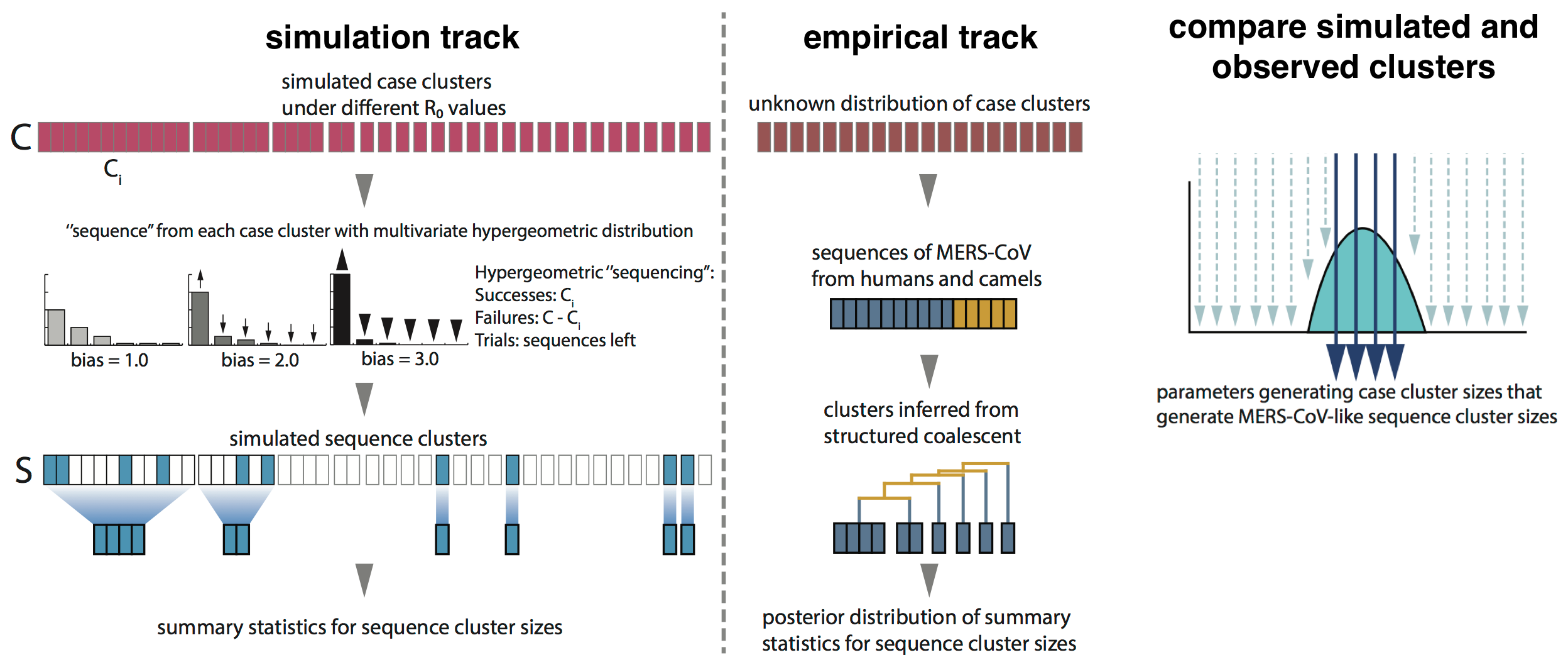
Phylogenetic clustering suggests $R_0$ below 1.0 and ~2000 human cases driven by ~600 introduction events

Similar results when we assume larger clusters are more likely to be sequenced
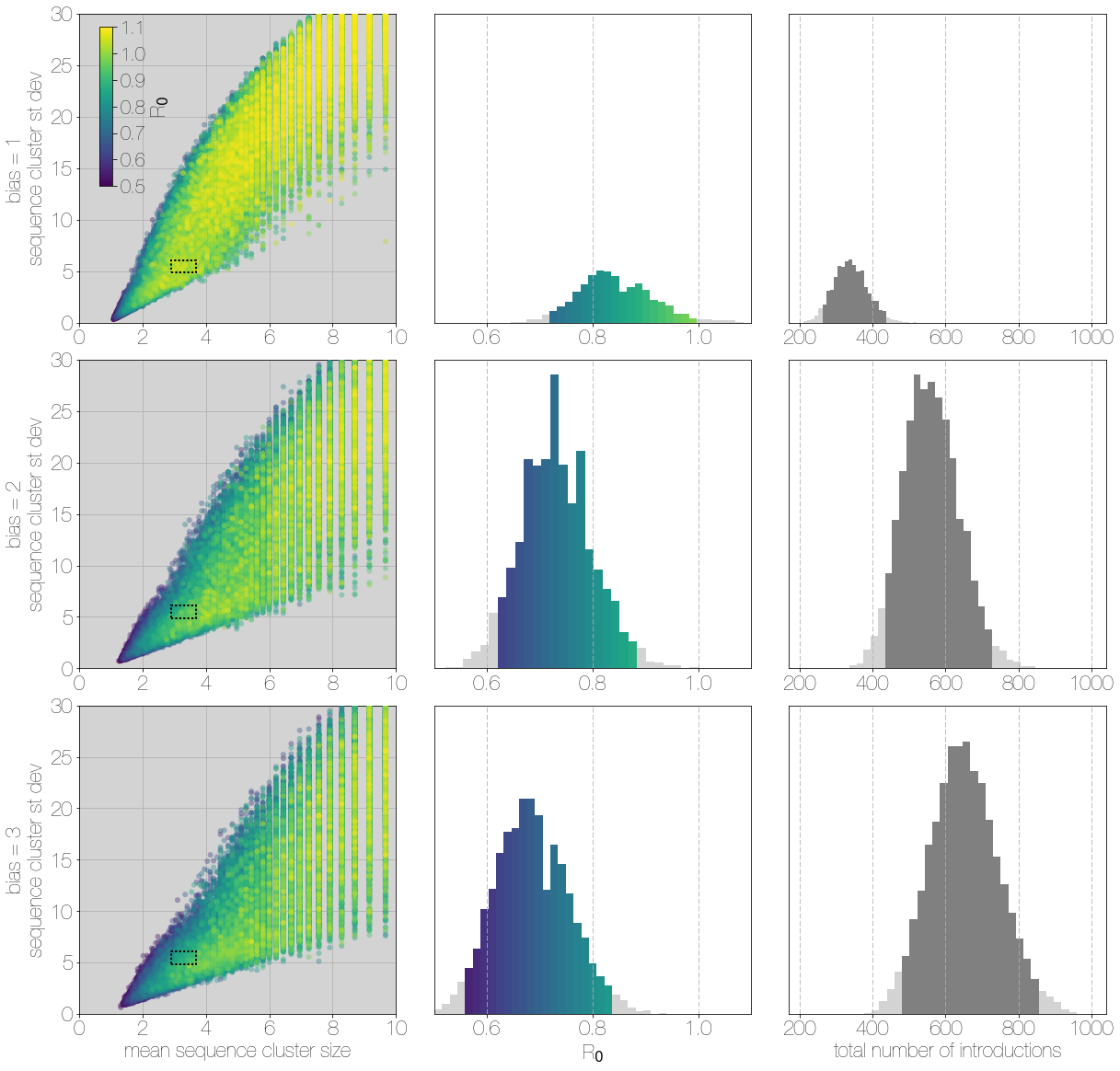
Critically, no evidence of increasing cluster sizes through time
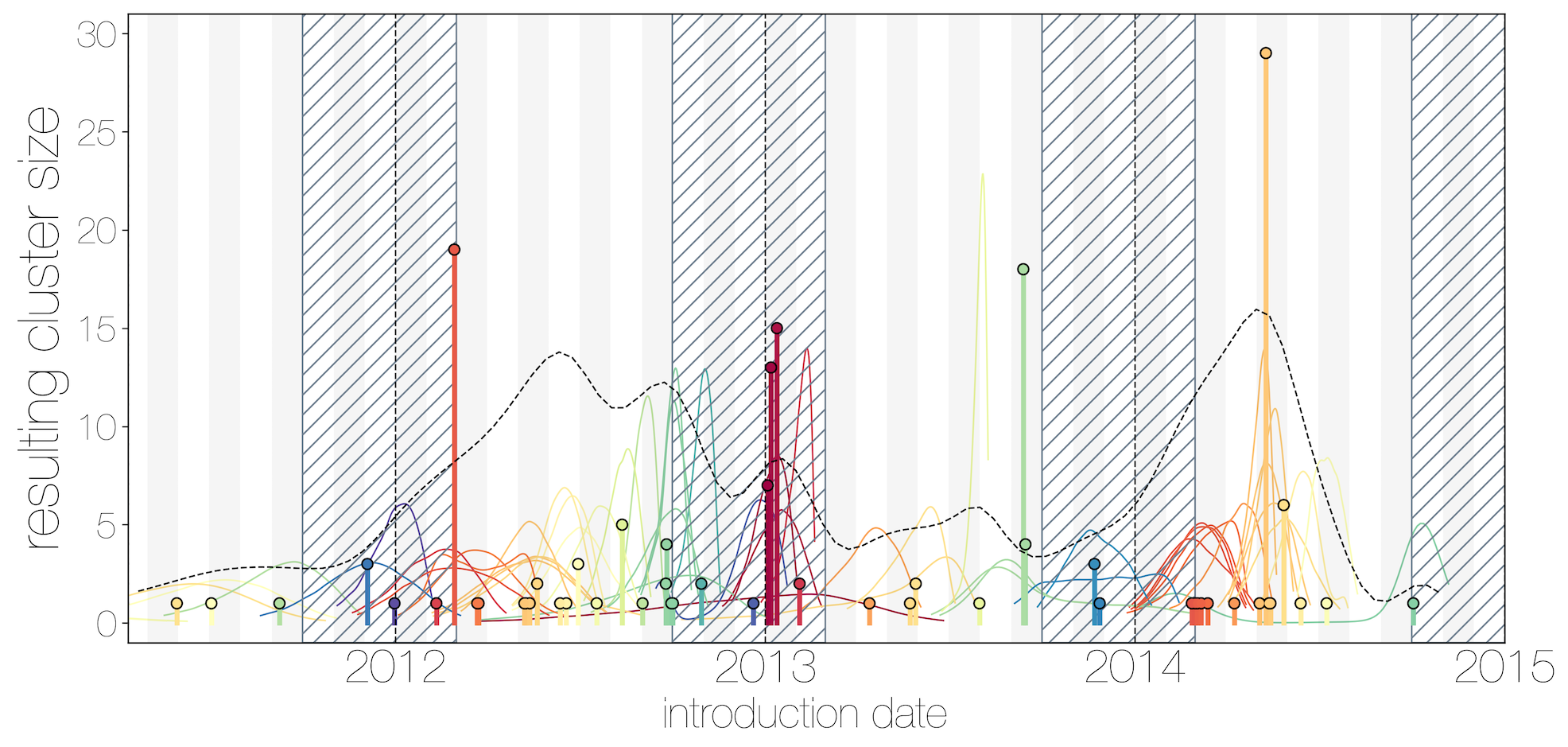
Many other viruses that exhibit stuttering chains of human infection
- Nipah virus (fruit bats / pigs, Southeast Asia)
- Lassa virus (rodents, West Africa)
- Avian influenza (birds, mainland China)
Ebola
Ebola epidemic of 2014-2016 was unprecedented in scope
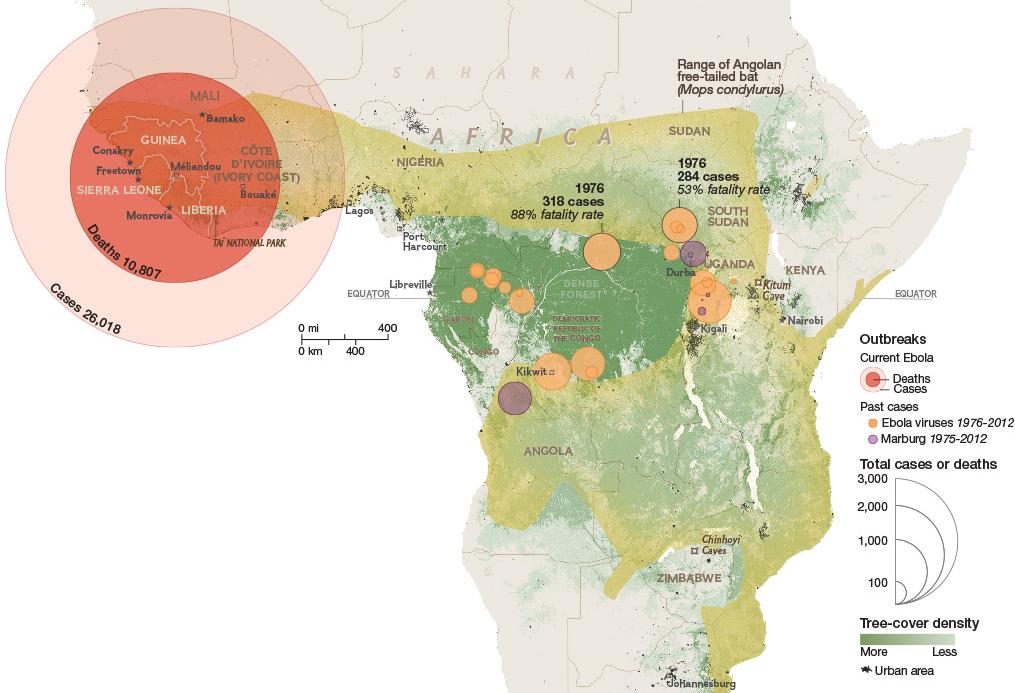
Ebola epidemic in West Africa
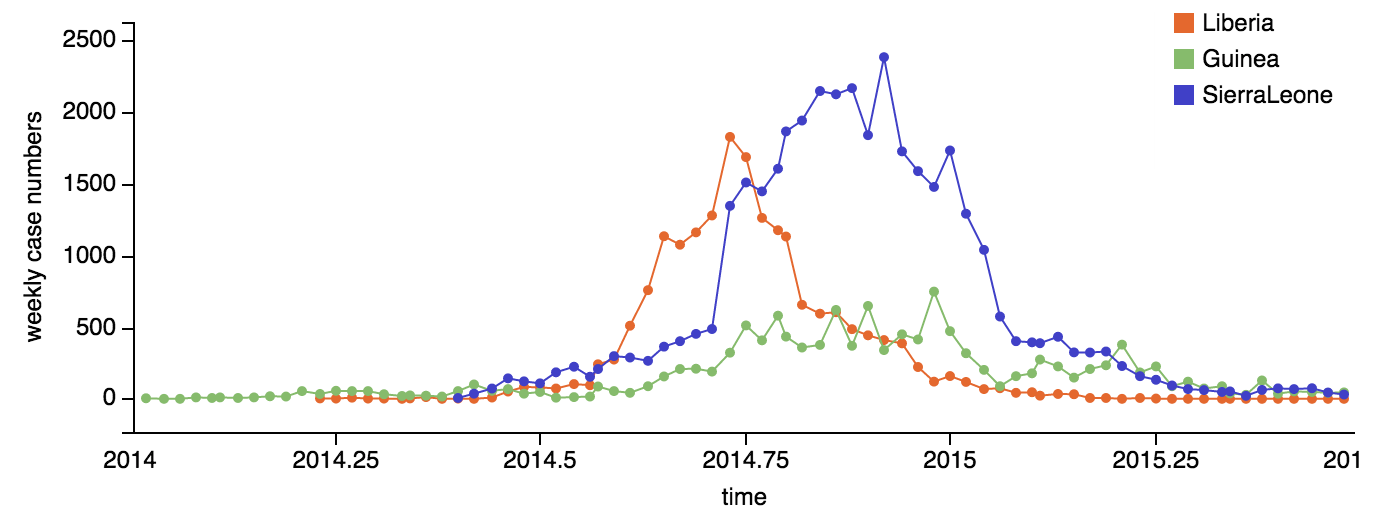
Virus genomes reveal factors that spread and sustained the Ebola epidemic
with ![]() Gytis Dudas, Andrew Rambaut, Luiz Carvalho, Marc Suchard, Philippe Lemey,
Gytis Dudas, Andrew Rambaut, Luiz Carvalho, Marc Suchard, Philippe Lemey,
and many others
Sequencing of 1610 Ebola virus genomes collected during the 2013-2016 West African epidemic

Sequenced genomes were representative of spatiotemporal diversity

Phylogenetic reconstruction of epidemic

Tracking migration events

Factors influencing migration rates
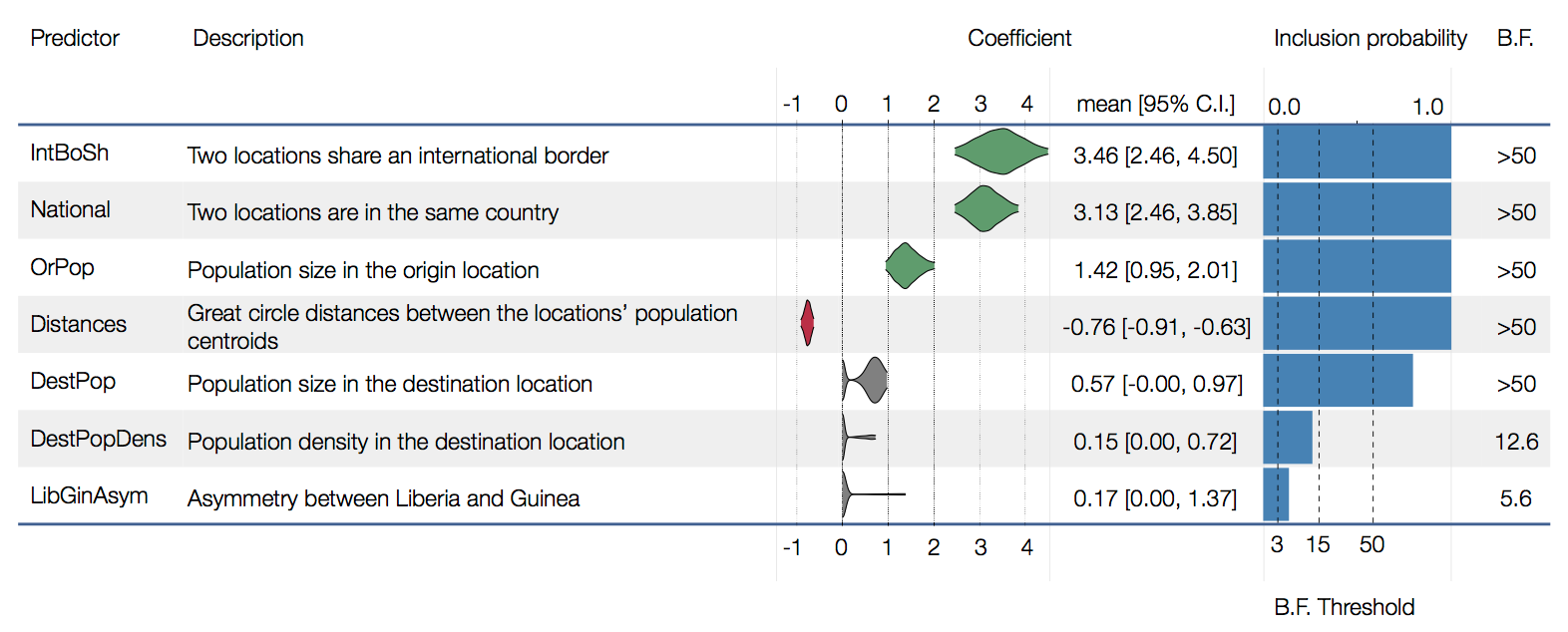
Effect of borders on migration rates
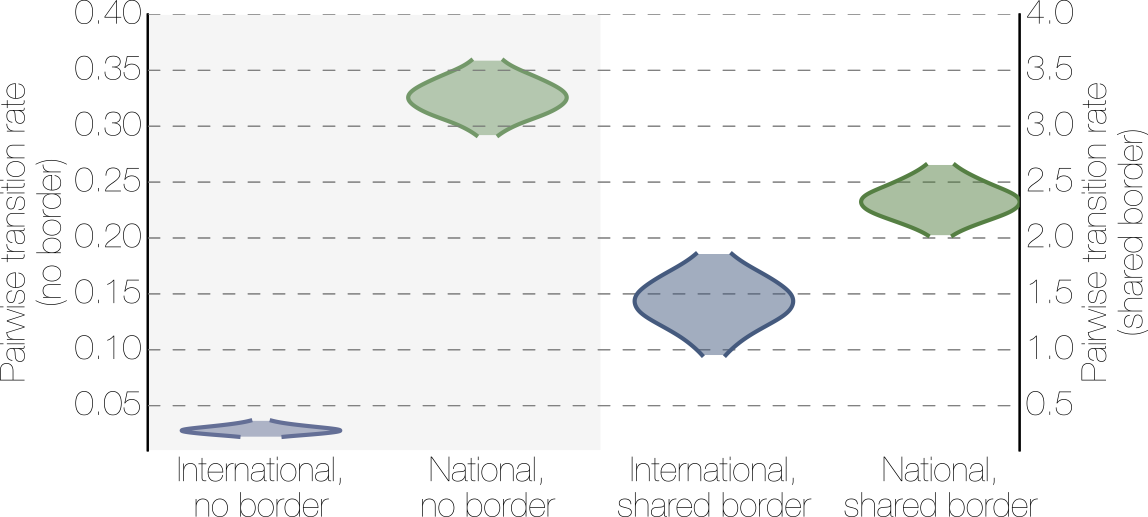
Spatial structure at the country level
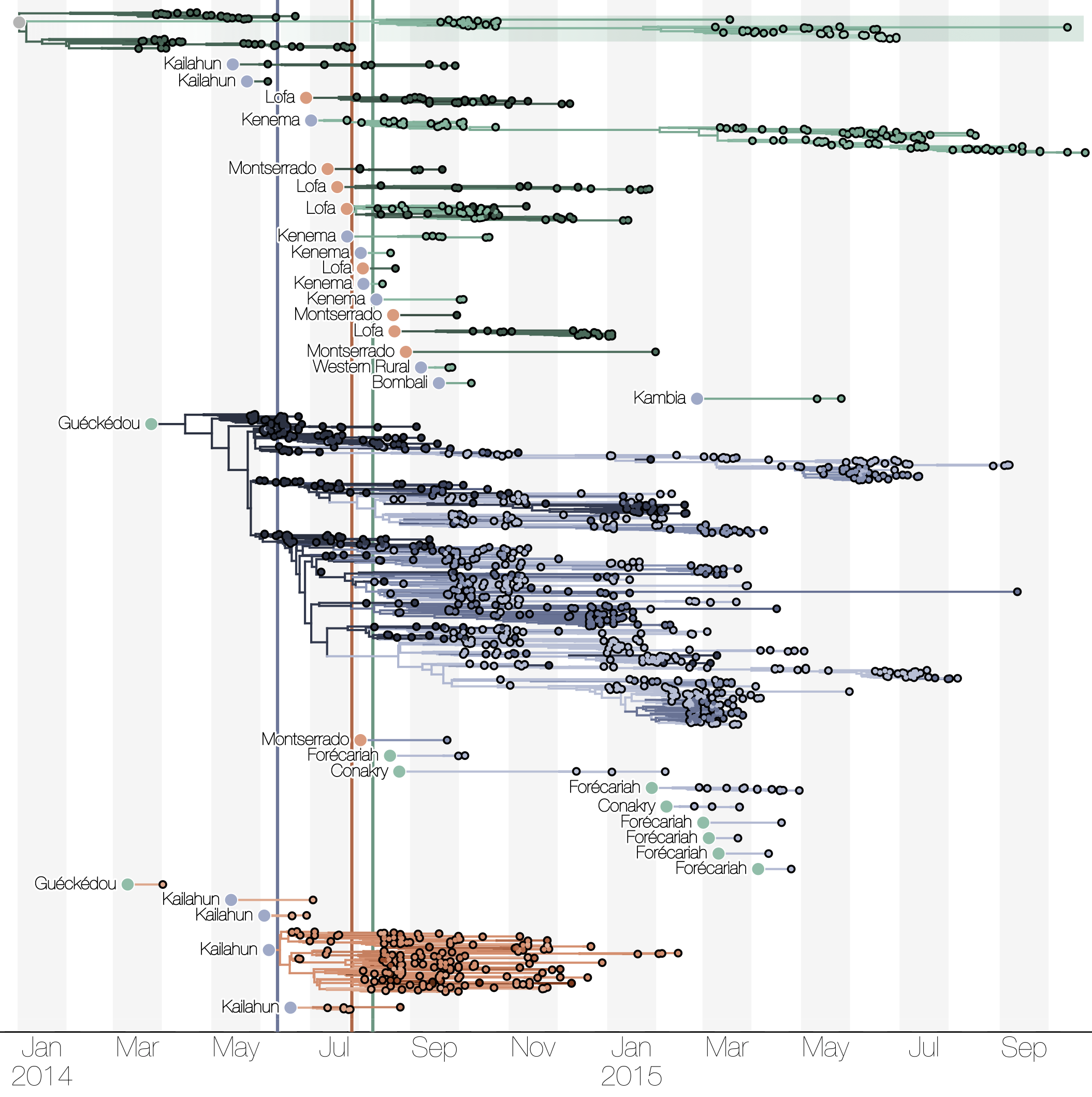
Substantial mixing at the regional level

Regional outbreaks due to multiple introductions
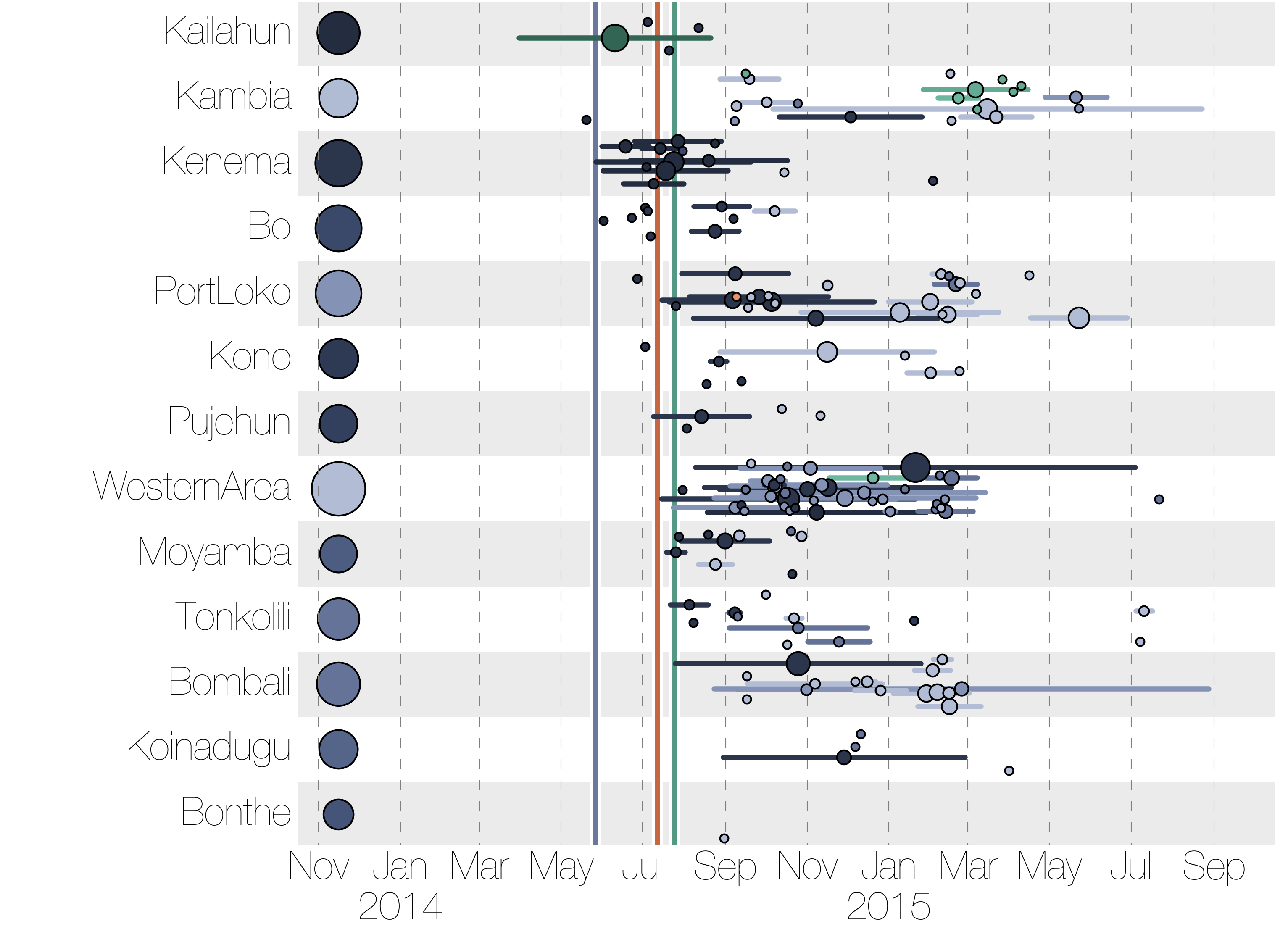
Each introduction results in a minor outbreak

Zika
Zika's arrival and spread in the Americas
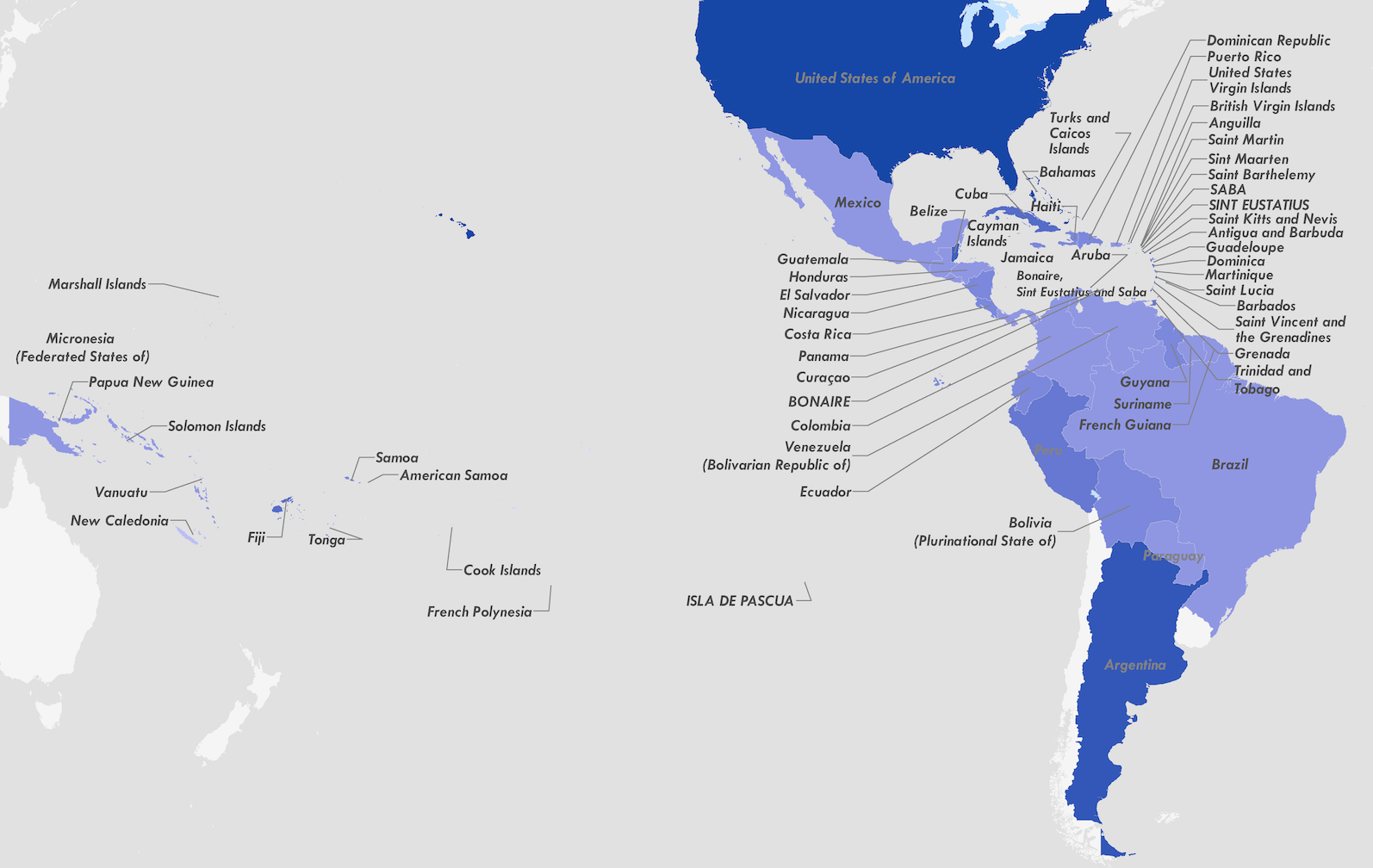
Establishment and cryptic transmission of Zika virus in Brazil and the Americas
with Nuno Faria, Nick Loman, Oli Pybus, Luiz Alcantara, Ester Sabino, Josh Quick,
![]() Alli Black,
Ingra Morales, Julien Thézé, Marcio Nunes, Jacqueline de Jesus,
Alli Black,
Ingra Morales, Julien Thézé, Marcio Nunes, Jacqueline de Jesus,
Marta Giovanetti, Moritz Kraemer, Sarah Hill and many others

Road trip through northeast Brazil to collect samples and sequence
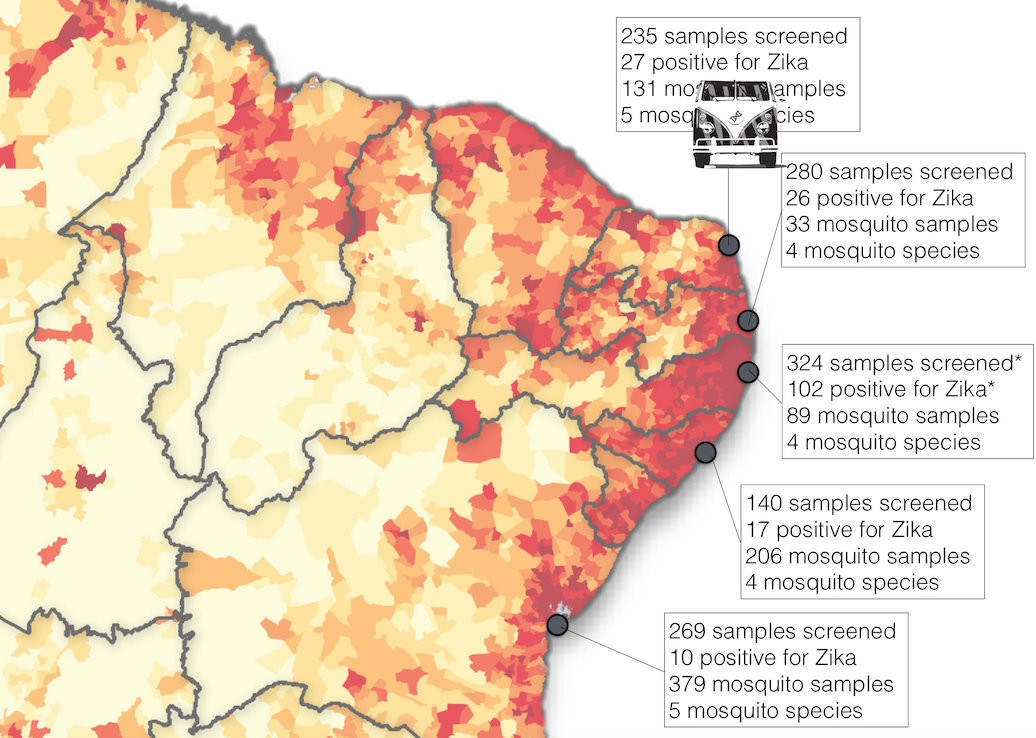
Case reports and diagnostics suggest initiation in northeast Brazil
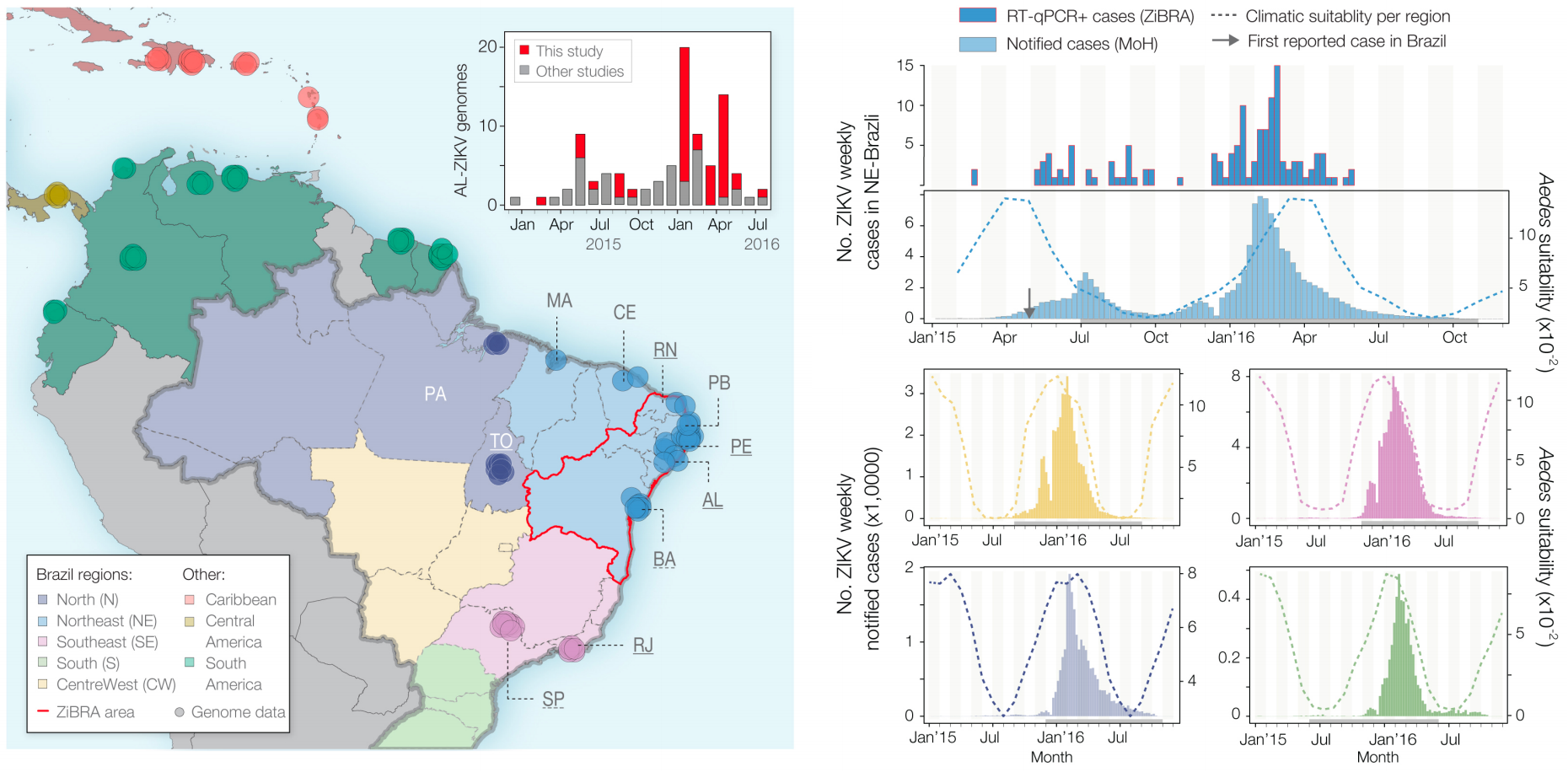
Phylogeny infers an origin in northeast Brazil
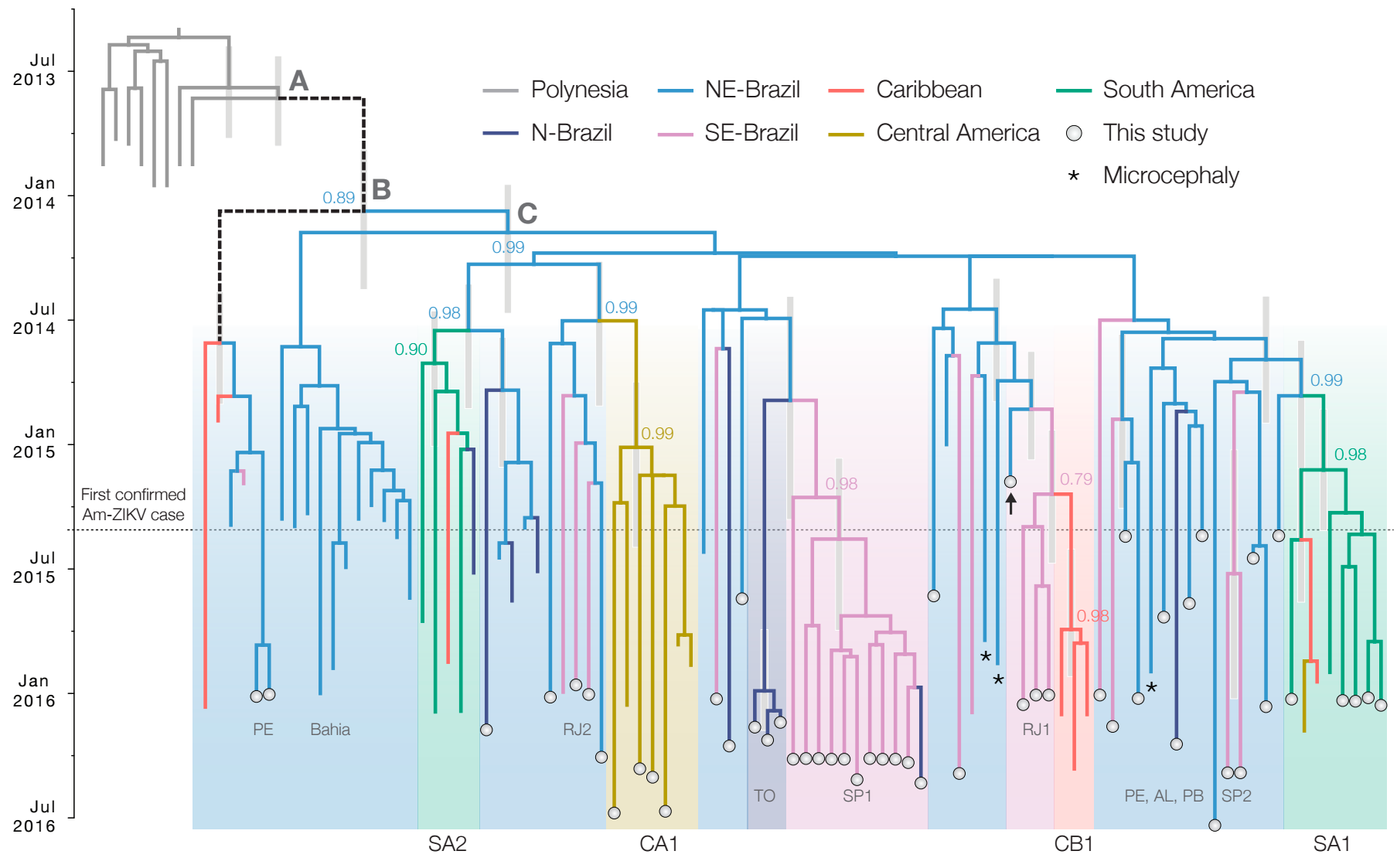
Actionable inferences
Genomic analyses were mostly done in a retrospective manner
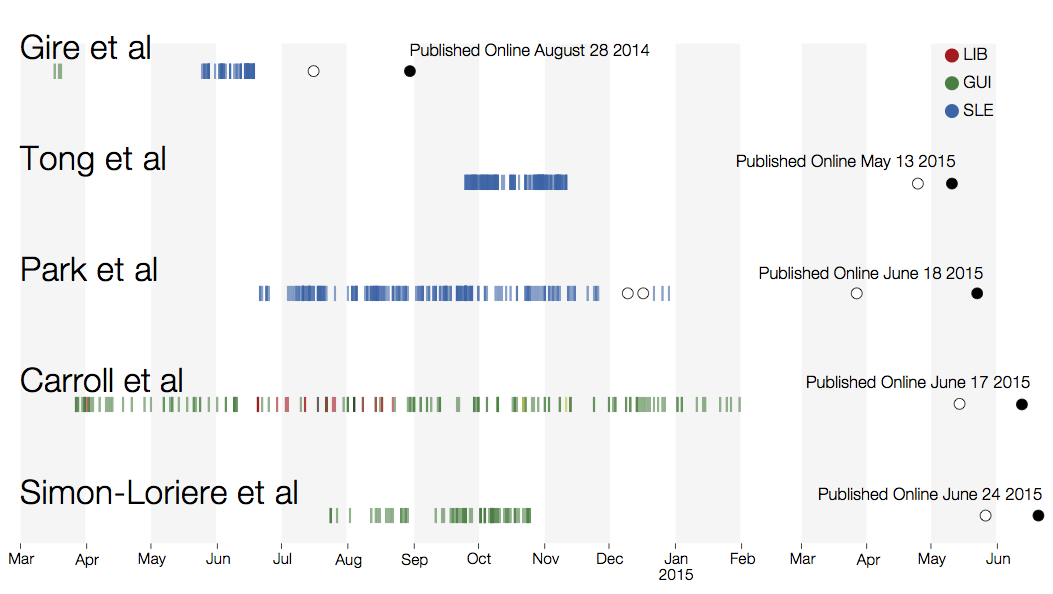
Key challenges to making genomic epidemiology actionable
- Timely analysis and sharing of results critical
- Dissemination must be scalable
- Integrate many data sources
- Results must be easily interpretable and queryable
Nextstrain
Project to conduct real-time molecular epidemiology and evolutionary analysis of emerging epidemics
with
![]() Richard Neher,
Richard Neher,
![]() James Hadfield,
James Hadfield,
![]() Colin Megill,
Colin Megill,
![]() Sidney Bell,
Sidney Bell,
![]() John Huddleston,
John Huddleston,
![]() Barney Potter,
Barney Potter,
![]() Emma Hodcroft,
Emma Hodcroft,
![]() Charlton Callender
Charlton Callender
Nextstrain architecture
All code open source at github.com/nextstrain

Example pipeline for 1600 Ebola genomes
- Align with MAFFT (34 min)
- Build ML tree with RAxML (54 min)
- Temporally resolve tree and geographic ancestry with TreeTime (16 min)
- Total pipeline (1 hr 46 min)
nextstrain.org
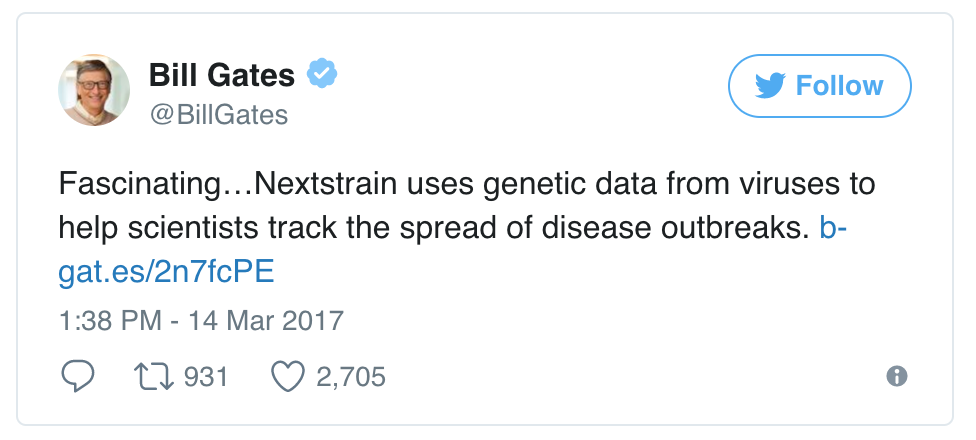
Rapid on-the-ground sequencing by Ian Goodfellow, Matt Cotten and colleagues
Build out pipelines for different pathogens,
improve databasing and lower
bioinformatics bar
Acknowledgements
Bedford Lab:
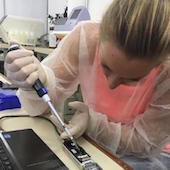 Alli Black,
Alli Black,
 Sidney Bell,
Sidney Bell,
 Gytis Dudas,
Gytis Dudas,
 John Huddleston,
John Huddleston,
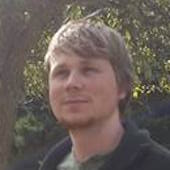 Barney Potter,
Barney Potter,
 James Hadfield,
James Hadfield,
 Louise Moncla,
Louise Moncla,
 Tom Sibley
Tom Sibley
MERS: Gytis Dudas, Andrew Rambaut, Luiz Carvalho
Ebola: Gytis Dudas, Andrew Rambaut, Luiz Carvalho, Philippe Lemey, Marc Suchard, Andrew Tatem
Zika: Nick Loman, Nuno Faria, Oli Pybus, Josh Quick, Ingra Claro, Julien Thézé, Jaquilene de Jesus, Marta Giovanetti, Moritz Kraemer, Sarah Hill, Allison Black, Ester Sabino, Luiz Alcantara
Nextstrain: Richard Neher, James Hadfield, Colin Megill, Sidney Bell, Charlton Callender, Barney Potter, John Huddleston, Emma Hodcroft






